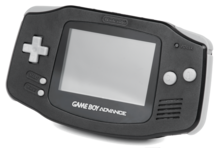Remember those quirky maze games from the arcades and early consoles where you'd trap enemies by digging holes? While Kid's Horehore Daisakusen (the arcade original) and its Famicom port, Booby Kids, might ring a bell for some dedicated retro fans, there's a slightly more obscure entry in the lineage: Booby Boys for the Nintendo Game Boy. Released in 1993 by Nichibutsu (Nihon Bussan), this handheld title continued the digging action on a smaller, monochrome screen, becoming a quiet gem for collectors and enthusiasts of Japan-only releases.
What Exactly is Booby Boys?
Unlike its predecessors which saw various releases and name changes (including the TurboGrafx-16 port Cratermaze that made it outside Japan), Booby Boys was a direct sequel developed specifically for Nintendo's ubiquitous handheld. It kept the core concept of the earlier games but tailored it for the Game Boy's capabilities and on-the-go playstyle.
Think of it as the next chapter in the hole-digging, enemy-trapping saga, bringing that specific brand of maze-based puzzle-action to the portable realm.
Connecting the Dots: Booby Kids and Cratermaze
To appreciate Booby Boys, it helps to know its roots. The gameplay popularized by Booby Kids involved navigating multi-screen maze levels from an overhead view. Your character's primary ability was instantly digging holes. Enemies would fall into these holes, becoming temporarily trapped, at which point you'd need to fill the hole back in (often by digging another adjacent one) to defeat them.
The Famicom's Booby Kids expanded on the arcade original by adding more puzzle elements and varied level designs across different time periods, complete with unique collectibles in each era. Booby Boys, as the sequel, likely iterated on this formula, adapting the mechanics and level structure for the Game Boy's hardware.
Gameplay on the Go: What to Expect
While details specific to the Game Boy version can be scarce compared to its console brethren, we can infer the gameplay experience:
- Maze Navigation: Levels are likely presented as interconnected rooms or larger scrolling areas filled with walls and obstacles.
- Digging Action: The core mechanic of creating and filling holes to trap and defeat enemies remains central.
- Enemy Variety: Expect different enemy types with unique movement patterns that require strategic digging.
- Item Collection: Picking up scattered items is crucial, perhaps for scoring or unlocking exits, similar to the predecessor's varied collectibles.
- Puzzle Elements: The maze structure and enemy behavior often create light puzzle scenarios where timing and placement of holes are key.
The Game Boy's limited screen size and resolution would have necessitated careful level design, perhaps focusing on smaller, more intricate screens or using scrolling effectively. The simple controls (D-pad for movement, a couple of buttons for actions) were perfect for the digging mechanic.
Why Booby Boys Flew Under the Radar
Part of Booby Boys' obscurity stems from its release strategy. It was a Japan-exclusive title (DMG-B8J being its Japanese cartridge model number), meaning it never saw an official release in North America or Europe. While Cratermaze gave Western players a taste of the series on the TurboGrafx-16, the specific Game Boy sequel remained a hidden treasure for importers and those who delved deep into the Japanese Game Boy library.
For many retro gamers outside of Japan, discovering Booby Boys often happens much later, perhaps through emulation or stumbling upon a cartridge listing online.
Finding Booby Boys Today
If you're a retro game collector or simply curious to try this sequel, tracking down a physical copy means looking to import sites or auction platforms like eBay, where it occasionally appears. Prices can vary depending on condition and seller.
For those less focused on physical media, emulation is another route to experience this title, allowing you to step into the shoes of the hole-digging protagonist on your computer or compatible device.
Booby Boys might not be as famous as Tetris or Super Mario Land, but it represents a neat continuation of a fun, unique gameplay style on a beloved handheld console. It's a perfect example of the quirky, creative titles that populated the Game Boy's vast library, waiting to be rediscovered by a new generation of retro enthusiasts.
Frequently Asked Questions
Q: Is Booby Boys the same game as Booby Kids or Cratermaze? A: No, Booby Boys is a sequel released for the Game Boy in 1993. Booby Kids was the Famicom port of the 1987 arcade game Kid's Horehore Daisakusen, and Cratermaze was the TurboGrafx-16 port of the same arcade game released outside Japan. They share a common lineage and similar gameplay style, but Booby Boys is a distinct title.
Q: Who developed Booby Boys? A: Booby Boys was developed and published by Nichibutsu (Nihon Bussan).
Q: Can I play Booby Boys on modern consoles? A: Booby Boys was a Japan-exclusive Game Boy title and has not seen official re-releases on modern platforms like the Nintendo Switch or through virtual console services. Playing it typically requires finding original hardware and cartridges or using emulation.
Q: What type of game is Booby Boys? A: Booby Boys is a maze-based action-puzzle game played from an overhead perspective. The main mechanic involves digging holes to trap enemies and navigating levels filled with obstacles and collectibles.


